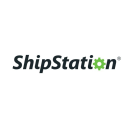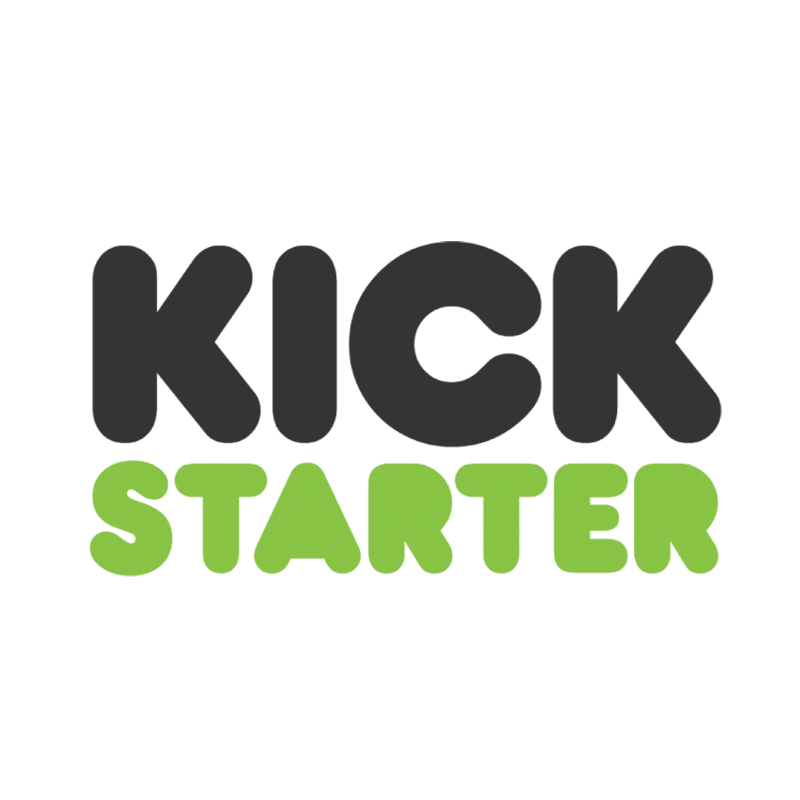
How I Designed A $150K/Month Portable Pressurized Shower And Went On Shark Tank
Hello! Who are you and what business did you start?
My name is Chris Crawford and I am the founder of RinseKit. We design, manufacture, and sell the RinseKit- a portable pressurized shower that’s like having a hose to go. It doesn’t require pumping or batteries, fills from a hose spigot or sink in 30 seconds, can maintain pressure for up to a month, and is entirely portable. We started the business back about 5 years ago and have since grown to average over $1.5 M in sales each year.


What's your backstory and how did you come up with the idea?
It all really just stemmed from my love for surfing. I was tired of getting in my car salty and dirty with no time to go home to shower before work and the only real portable shower available at the time was the cheap solar bag. I'd drive up and down the beach all the time looking for a good place to surf and saw that most people were just using old laundry detergent bottles to rinse themselves off. So I recognized that there was an opportunity to make a shower system that was portable and easy to use.
I had my own pool construction business at the time so I made the first version out of PVC pipe. I had several people ask me how I made the shower in the back of my truck so I started to sell them. After making a few design changes, we launched the brand and ran the business out of my garage. It all just grew from there.
The worst thing you can do as a business owner or entrepreneur is to try to mundanely copy what other businesses around you are doing. Don’t be afraid to be a pioneer.. and don’t resort to outsourcing everything.
Take us through the process of designing, prototyping, and manufacturing your first product.
The manufacturing process took a lot of time and a lot of attention. I had initial concepts from models I had made, but going into mass production required redesigns, constant testing, and a lot of back and forth with our manufacturers. Our product relies on a tool that is created out of something called a CAD file. The CAD file is essentially a 3D digital design model for an object. It took months for us to build the CAD file and design a product that functioned well and looked good.
Once we had approved design, I actually flew out to China where our product is manufactured. While I was there, I got to see the product being made, test it, and make changes in real-time. There are so many things that come up during the production process, it’s nice to be there in person to troubleshoot problems and brainstorm changes. I actually got to be there for the creation and refinement of the product- and that was big for us!
Once a small amount of the product was made, we began to test it to try to stretch the limits of what it could do and test for possible failures or defects. It takes a while to do a quality test on a new product, but it’s so worth it.
When we were happy with the product and how it stood up in quality control testing, we went into mass production and made containers at a time. For reference, a container has about 1,500 units in it. So for me, going from making these in my garage to seeing an entire container of them was really something. I’ll never forget the arrival of the first container and the excitement of all the opportunity ahead.
Describe the process of launching the business.
When I was making units out of the garage, we started selling them at local street fairs and trade shows. Once we got production going we ran a Kickstarter campaign and raised over $400,000. We got pretty lucky with our Kickstarter and had a video go viral and get over 36,000,000 views on Facebook. That kicked the business into high gear from that point on.
Take your time when setting up the business. Everything from finding the right manufacturer to bringing on investors. It’s hard to know what’s right and wrong your first time going through the process, but do your homework!
Shortly after the Kickstarter campaign we had the producers from Shark Tank reach out to us asking us to appear on the show. To this day we still get people asking about Shark Tank and what that experience was like; it was a tremendous help in getting our name out there and the reruns continue to bring in new customers.
We continued to grow and developed roots in wholesale selling to companies like REI, Camping World, and Bass Pro. Over time we also began to sell to larger companies like Costco, Walmart, and Sam’s Club.

Since launch, what has worked to attract and retain customers?
We have evolved quite a lot over the last five years and have seen sales trends and marketing strategies change drastically during that time.
Initially, we focused on developing our business through the traditional wholesale distribution model using regional and state sales representatives. We invested in trade shows, events, PR firms, and in-store displays.

The wholesale model worked for us for the first couple of years of our business, but with the rise of eCommerce, especially the exponential growth of Amazon, we decided we needed to take a different approach. Our primary focus has since shifted to eCommerce and Big Box Stores/Club accounts like Costco, Walmart, and Sam’s Club. This sales strategy required a new approach to marketing which meant we stopped producing in-store displays and started engaging in Facebook and Instagram ads. We use Facebook, Instagram, Refersion, Affiliate programs, Amazon Ads, Influencers and Google Ads to drive traffic.
Our advice for aspiring founders is to do your research and find out what works best for you with the product you want to sell and the channel you want to sell it in. The fact of the matter is that every business is different and there isn’t a one size fits all approach to marketing or sales. What worked for your friend or worked for us, may not work for you. So do your research, pay attention to the analytics, and don’t be afraid to try new things or think outside the box. The worst thing you can do as a business owner or entrepreneur is to try to mundanely copy what other businesses around you are doing. Don’t be afraid to be a pioneer.. and don’t resort to outsourcing everything. There is always going to be a salesperson coming in and telling you that they can run your marketing business better, and sometimes they can, but oftentimes they can’t. No one knows your business better than you.
In regard to Amazon, we have a love-hate relationship with them. Amazon in and of itself is an incredible platform that has really done a lot to transform commerce, but it can’t be treated nonchalantly. It can ruin your business with infringement violations, review issues, and pricing inconsistencies. If you’re trying to operate in the wholesale marketplace, be very careful which resellers you allow selling on Amazon as Amazon’s lowest price algorithm often works in direct opposition to upholding MAP pricing. We think Amazon is a great tool for eCommerce businesses though if you’re careful with how much inventory you put into FBA warehouses and don’t rely on it as the only source of income.
How are you doing today and what does the future look like?
If at any point you walk into our offices, you will immediately feel the buzz of conversations, ideas, innovation, and critical problem-solving. Business is constantly changing and so are the needs of our customers, which means it's our duty, and privilege, to constantly evaluate where we have been and where we are going.
We are thrilled about the trajectory of our business and excited to see all the new ways it will grow in 2020. From new accounts to new industry opportunities, we know 2020 will be big for us. We are in the process of developing new products and new marketing material. Our sales strategy has shifted and we are implementing new apps and technology to improve our customer experience. We have grown our eCommerce business by over 300% this year and are very excited to keep the momentum going.
Through starting the business, have you learned anything particularly helpful or advantageous?
Take your time when setting up the business. Everything from finding the right manufacturer to bringing on investors. It’s hard to know what’s right and wrong your first time going through the process, but do your homework! Rushed projects and decisions will almost always come back to bite you. If you meet someone who is pushing you hard to not miss the opportunity it should be a red flag. Find some good advisors who are not invested or going to benefit from the business. They will give you unbiased advice. At the end of the day, most people are looking out for their interests.
It will get tough and you need to get lucky. All the success stories are usually harder than they appear when you get under the hood. Every business has tough times and you just need to keep pushing and keep getting smarter. When the lucky breaks come don’t be afraid to take some calculated risks. We were not sure if we were going to do the Kickstarter and we were worried about going on Shark Tank. Both opportunities really were fun and helped the business grow at the end of the day.
Here are three other tips to help you get started.
KNOW YOUR COSTS. Profitability is key to long term success, and you can’t be profitable if you don’t have a firm grasp on your margins. Go over your costs with a fine-tooth comb and don’t forget, it’s not just about the cost of goods, there are a lot of indirect costs associated with selling online. Look at things like import fees, duties and taxes, warehousing and fulfillment fees, platform fees, marketing fees like Facebook ads, shipping cost, acquisition costs, sales taxes, commissions, etc. Every penny counts.
Make sure your product or service solves a problem or meets a need and communicate it to your customer. Do your market research upfront and avoid markets that are saturated or trend markets that won’t have a long-lasting consumer base. Pay attention to pricing BEFORE you commit to a product and make sure there is a market for your product with an MSRP people are willing to pay for and that gets you a healthy net margin.
TINKER TINKER TINKER. Never get too comfortable with sales, ALWAYS evaluate your business. What has the highest yield for you? Is it specific ad sets, products, new verbiage, new content, ambassador programs? What isn’t working? Cut out the extra fat. Never let your business become stagnant because you didn’t take the time to look at the numbers and study the data.
What platform/tools do you use for your business?
We currently use Shopify for our website and use integrated apps like Shipstation, Refersion, Mailchimp, and Quickbooks. We also use programs like Adobe Creative Suite, Google Analytics, Google Ads, and Facebook ads.
In our experience, Facebook has the best conversion rate for us, so we invest heavily in our advertising there. We originally used WP/Woo for site/cart then switched to Shopify. Though Shopify is more expensive, the reporting tools are easier to manage for most people. Shopify’s CS is excellent and the site is less likely to crash which we experienced with several WP hosts.
Shipstation is a great tool! It integrates directly into Shopify and automates our entire order processing system including making labels. We can make presets so that when a specific product is ordered, it will automatically input weights and dimensions, select the best carrier, and create the label.
We also use Quickbooks online. When we were selling in multiple channels like wholesale, online, amazon, club, and mass, we needed to use the desktop version which was more robust. But now that we aren’t as diversified we can use Quickbooks online. It has great integration features and is really user friendly. We recommend making sure to still hire a bookkeeper to make sure your finances are always above board.
There are so many tools out there and the prices can vary drastically; just know that the most expensive tools are not always the best. Don’t be afraid to try new systems and apps- you never know what will work for you.
What have been the most influential books, podcasts, or other resources?
Masterclass is one of my favorite resources. I love hearing from experts in so many different industries. It triggers a lot of creative thinking for our team. I also really got a lot out of the book Let My People Go Surfing.
Advice for other entrepreneurs who want to get started or are just starting out?
As I said before, do your homework and be okay with calculated risks. If you never take calculated risks, you will stifle your ability to grow. One of our other recommendations is to make sure you have a well-rounded team. Invest in people who all bring something different to the table- a grounded numbers person with a reach-for-the-stars salesman is a dynamic team- but apart neither can succeed. Diversify your team and empower everyone to work in their strengths.
Are you looking to hire for certain positions right now?
No, we are not currently hiring, but if you’re interested in working for us, you can email us your resume and we will file it for further consideration.
Where can we go to learn more?
If you have any questions or comments, drop a comment below!

Download the report and join our email newsletter packed with business ideas and money-making opportunities, backed by real-life case studies.

Download the report and join our email newsletter packed with business ideas and money-making opportunities, backed by real-life case studies.

Download the report and join our email newsletter packed with business ideas and money-making opportunities, backed by real-life case studies.

Download the report and join our email newsletter packed with business ideas and money-making opportunities, backed by real-life case studies.

Download the report and join our email newsletter packed with business ideas and money-making opportunities, backed by real-life case studies.

Download the report and join our email newsletter packed with business ideas and money-making opportunities, backed by real-life case studies.

Download the report and join our email newsletter packed with business ideas and money-making opportunities, backed by real-life case studies.

Download the report and join our email newsletter packed with business ideas and money-making opportunities, backed by real-life case studies.

















































